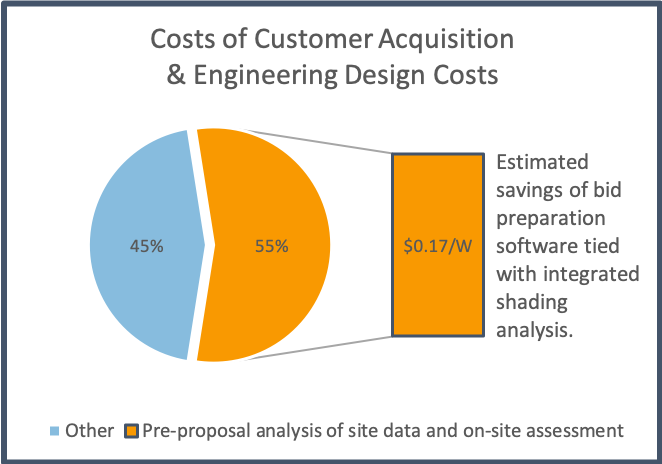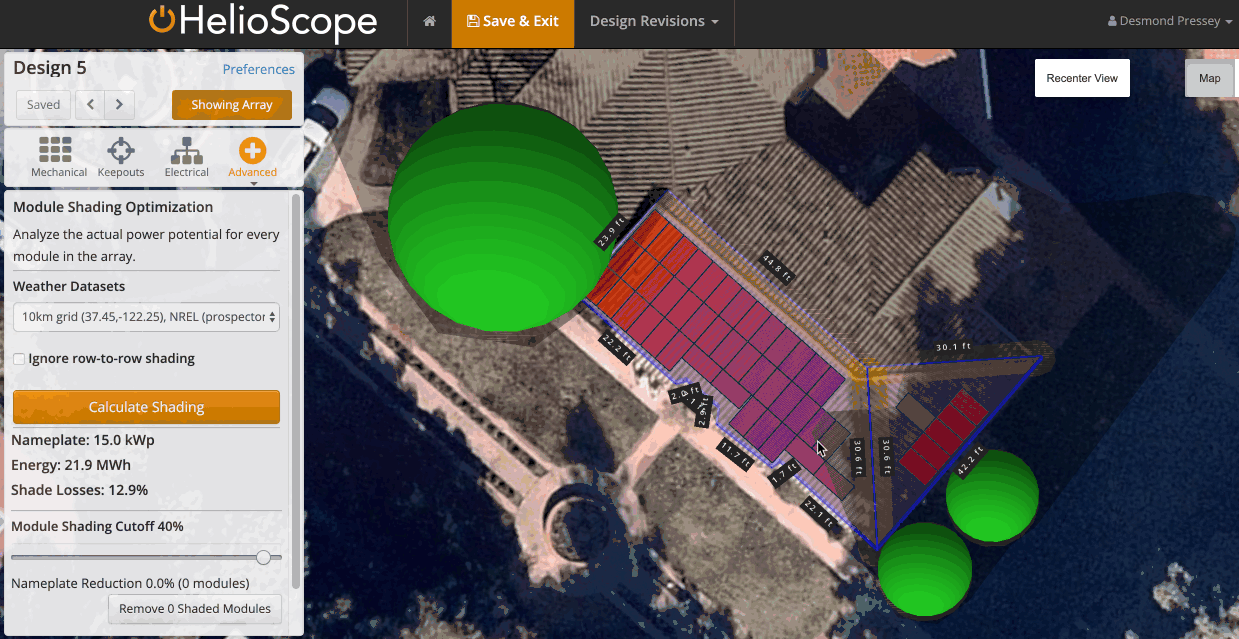If you’re reading this Buyer’s Guide, it is very likely that you are on the search for solar software. But what is it that triggered you to think that your current set of tools and methods of business can be improved on? If you are like many others on this search, the following key advantages of solar software may be the reason why you are reading this guide now.
This guide will contain the following chapters that can lead to a successful purchase and use of a solar software.
Chapter 1 – Why Solar Software is Worth Your Attention Today
Chapter 2 – The Framework on Making a Good Decision
Chapter 3 – Addressing the Concerns Your Team Might Have
Chapter 4 – Assembling a Software Ecosystem
Chapter 1: Why Solar Software is Worth Your Attention Today
Today’s solar software programs can optimize your business workflow and enhance the effectiveness of your sales and operations teams. It may not be an expensive line item in your budget, but for the most effective solar companies today, software is foundational to the business plan rather than a mere afterthought.
Speed is a Silent Leverage Point – or Business Killer
Solar has seen a dramatic increase in adoption over the past decade. Much of this is due to a skydive in the price of components. These lower prices are putting higher pressures on companies to increase their sales volumes just to remain profitable. Today’s top solar companies are figuring out how to sell more clients in less time, while minimizing if not eliminating the time spent in the field before contract. In a study conducted by NREL it was found that “the cost of analyzing site data and conducting an on-site assessment—before a proposal—is estimated to constitute 55% of the customer acquisition and engineering design costs for residential solar PV installations.” That is where solar software such as HelioScope can play a major role in reducing these high soft costs with remote analysis capabilities.

The tools you are using to conduct your business can make or break your business. Today’s top solar companies are ditching slow, expensive manual processes such as onsite solar pre-assessments and self-built excel sheets for quicker, more effective solar specific software that can handle the analysis and streamline workflow procedures.
More Accuracy and Flexibility
The importance of accuracy in the pre-assessment of a potential solar system cannot be understated. Solar customers invest their hard-earned dollars into a product that they cannot “test drive” or trial use before purchase. That is why more solar installers and developers are turning to software-based solutions for their use of proposing a solar solution for customers. On top of the ability to conduct analysis quicker, solar software has proven to be as, if not more accurate than traditional, manual processes.
The flexibility of solar software has also unlocked business opportunities that did not exist just a few years ago. Today, solar companies are utilizing software to do business remotely. Without ever placing a foot on the site, solar companies are able to analyze projects and create proposals in minutes. That same capability allows solar professionals to make changes to their analysis and proposals on the fly, keeping the discussion with the end customer moving forward as desired.
Increase Close Rates with Better Customer Experience
With the advancements in software technology, consumers have increasingly high expectations for the experience that they will have in a buying process. Utilizing software during the sales process increases the visibility and interactivity of the discussion with your client, creating a more thorough and trusting customer interaction. It will also allow you to make changes on the fly when customers request changes or want to see options.
Self-Made Tools can Limit Your Business
We’ve all made a killer spreadsheet that helps us run our businesses. But at some point, relying on too man self-made tools brings us diminishing returns. As businesses seek to grow or even maintain success, specialized tools become more necessary and ultimately more reliable. If you are the sole creator of a spreadsheet, what happens when you are beginning to sell in a new territory, or you have a new market segment that you need to enter into? Your self-made tool will have to be constantly maintained and your team will have to be updated on those changes as well. This can lead to time being taken away from the most important aspects of your business such as sales, operations, or engineering. The worst-case scenario is when the tool is accidentally broken or deleted. Without support, you will have lost everything. That is why many new and mature solar companies look for software programs that also provide customer support. They can rely on the program for not only the tool, but for also the training and support necessary to bring their employees up to speed for the job.
Stage 2: Evaluating Solar Software
There are many solar software programs out there, but not all value propositions matter equally for all solar companies. In fact, depending on your business model and objectives, some attributes might not matter at all. This section will give you the main things to consider when choosing the software(s) for your company.
User Friendliness & Support
Whether you are a one-man team or a large enterprise solar company, you will want to make sure the software you choose is user friendly and has solid support. The idea is not to double your training requirements for your team, but rather rely on the intuitiveness and the support team of the software. For example, in the video below you can see how HelioScope utilizes a simplified design interface and the ability to automatically model a solar system with just a few clicks of the outline of the roof or area for the array. You can also see an example of a 5 minute commercial design here.
Many users can appreciate a quality software that provides a simplicity while not sacrificing the scope of capability. Supporting this type of software program requires an equally quality knowledge-base. HelioScope incorporates that support through help documentation, live webinars, as well as chat an email support from real people with a depth of industry knowledge. This is an area of a software product that you will want to evaluate in depth.
Capability & Speed
Be sure to consider your needs as a company when evaluating the capability and speed of solar software. For performance and design considerations, here are some common questions.
• How many designs will you need per month?
• Can the speed of creating designs make a difference?
• What size projects do you need to simulate?
• How much control do you need over the design customization?
• Do you need single line diagrams?
• Do you need shade reports?
This and other questions will help you get a clear look at the differences between solar software. For example, solar companies have found HelioScope to be 4x faster than their previous tools and that has been a difference maker in their company’s performance.
"HelioScope allows me to run 4x as many iterations of layout in the same amount of time, helping us find the best solutions for our customers. The detailed and professional HelioScope reports help our presentations stand out against our competitors." - Phil Schneider, Creative Energies Solar
Best-in-Class vs All-in-One
There’s a constant debate between best-in-class solutions vs all-in-one solutions for software programs. This is an important consideration, because it will affect the other operations in your business. All-in-one solutions can make it easy to get your business started but given that software is relatively a small item in the budget for most solar businesses, you have to consider possible shortcomings. For example, a common need for a best-in-class solar design software is for companies that rely on the accuracy of their design tool. Competitive solar companies are often including design accuracy as part of their sales pitch by providing production guarantees in contracts. If your goal is to reduce the dependency of on-site assessments, and their associated costs, you will need an accurate design software like Helioscope to confidently provide a production guarantee. Typically the answer to what’s right will come down to whether you are looking to build your business around a software, where an all-in-one solution may be best, or have the software fit your specific business needs, where a best-in-class product may suit you better.
Top best-in-class solutions will help you complete all the tools needed for your business through integrations with other programs. For example, HelioScope integrates with Energy Toolbase for in-depth financial analysis, and storage modeling. Need high definition imagery? Folsom Labs has an integration with Nearmap to pull in their top-quality aerial energy for crystal clear solar designing in HelioScope. The full list of integrations is in Stage 4 of the guide.
Accuracy & Bankability
How important is accuracy to your customers and business? If you are like any of the top companies doing solar designs, you probably are looking to provide differentiations related to precision such as solar performance guarantees or shade reports that are bankable for incentives. Your customers may also ask the tough questions about the accuracy of your estimates and being able to explain a software’s results is vital to winning deals and setting the correct expectations for your customers. Solar software programs such as PVSyst have been held as industry standards for design estimates, even to the point where some proposal requests specifically call for that software due to the accuracy it can provide. HelioScope takes this same approach with its design accuracy and models solar physics all the way down to the module level. The results of simulations have been tested to be within 1% of highly respected peers such as PVsyst as well as verified by NREL to be accurate enough for remote shade analysis. HelioScope’s simulation reports are routinely accepted by banks for lending and incentives that require accurate shade modeling. See studies and example bank letter below.
Performance Modeling Evaluation Study
Wells Fargo Letter of Support
Affordability & Flexibility
Making the final choice of what solar software to use takes clarity of the bottom-line cost. Not all subscriptions or packages will lay out the full price you expect. For example, the total of variable costs such as a price per design or service can be hard to project and can add up quickly. You may think you will only need a few designs at first but keeping up with competition typically results in increasing design volume.
To cater to a wide range of teams, programs like HelioScope are priced per user. This provides clarity to the total expected price. HelioScope is also equipped with unlimited designs so your only limitation to how much you can do with one subscription is the time and skillset your team member(s) develops. This scales very well for whatever size your team is.
Another consideration is the volatility of the solar industry. With short notice, programs that support solar business have been cut, causing companies to pause or shut down. Understanding this reality, HelioScope does not require any long term or binding contracts, allowing you to cancel whenever you need to.
Common Key Features for Solar Design Software
We encourage you to take the opportunity to test the solar software options available including HelioScope's free 30-day trial. Assuming you are looking into solar design software, below is a list of features that many users find important and helpful as well as a visual example of how 3D design and shade optimization work together in HelioScope.

• Design Speed
• Bankable Results
• 3D Design
• Proposals
• Unlimited Designs
• Live Support
• Single Line Diagram
• CAD Export
• Max Design Size
• Shade Reports
• Global Weather Coverage
• Integrations
• Price
Stage 3: Addressing Your Teams Concerns
As you move toward making a decision on solar software, it will be important to communicate your decisions to your team. Below we have provided some perspective on the most common team concerns: price, learning investment, and reliability.
Price
Being on the fence about incorporating solar software is a normal part of the process. Solar software is not easy to produce and can be relatively pricey. But like some of the concepts we introduced earlier, the price can be easily justified when comparing the alternatives. For example, HelioScope has been known to save installers from having to visit a site to provide a proposal or production estimate for a customer. NREL estimates that a visit to analyze a site can cost an average of $169 per visit. With the increased popularity of solar, businesses are analyzing up to 100 or more sites a month. Having to visit each site would cost $16,900! With HelioScope, you could cut those visits in half if not eliminate them with unlimited analysis and designs for just $95 per month. With that perspective in mind, it becomes a no brainer to be concerned with the price of a software like HelioScope.
Learning Investment
Software is a great tool, but only to those who are able to utilize it. Some software programs are extremely capable but only a few people have the time or the qualification to learn them. Far better to have a program that can be quickly picked up by anyone in the organization and mastered in a few days. Below are a few steps to managing the investment of learning a software product:
- Look for a free trial period that enables self-service access to try the product
- Create an initial unit of work (design, or financial model) and see how quickly & effectively you can complete it
- Look for supporting documentation that can help plug any holes that come up during the initial trial period
- Look for quality support to obtain deeper explanations or help
Reliability
Few things are more frustrating than buying something that does not do what we expect it to do, or what it claims to be able to do. That is why it is important that software programs are clear about what they can and can’t do. A reliable program will provide a clear list of features, have content that shows the capability, and a support or sales team that can answer any questions. For example, HelioScope has a breadth of features that cater to beginners in solar as well as those who are experienced and need features with more depth and capability. HelioScope is backed with clear documentation and a support team that is capable of answering the most technical of questions.
Stage 4: Implementation & Integrations
Even if you’re just pulling the trigger on one software program, it’s important to consider how it fits into your overall software “stack” of tools. Ideally, you want a set of tools that will integrate seamlessly and provide the flexibility necessary for your team to succeed. HelioScope doesn’t pretend to be the best at everything, and thus it is integrated with other software companies so that users can have all the set of tools needed to have a successful solar company. Below is a list of HelioScope’s software integrations.
HelioScope + Energy Toolbase
Energy Toolbase is an industry leading software platform for modeling and proposing the economics of solar PV and energy storage projects. With HelioScope + Energy Toolbase you can automatically export your HelioScope designs into Energy Toolbase to analyze pv + storage solutions.
HelioScope + PVBid
PVBid analyzes a company’s past projects and trends to precisely generate a system’s estimated cost. With HelioScope + PVBid you can automatically export your HelioScope designs into PVBid for automated project cost estimating and financial analysis.
HelioScope + Nearmap
Nearmap offers businesses instant access to high-resolution aerial imagery, city-scale 3D datasets, and integrated geospatial tools. With HelioScope + Nearmap you can automatically import Nearmap’s high quality imagery into HelioScope’s design tool for improved modeling accuracy.
HelioScope + HOMER Energy
HOMER is an international brand that is the global standard in decision making for decision making in the microgrid and distributed energy resource (DER) space. With HelioScope + HOMER Energy you can automatically export your HelioScope simulation outputs into Homer Energy to complete a full microgrid analysis.
HelioScope + Unirac U-Builder
Unirac created the U-Builder program to allow solar companies to automate their engineering process with increased accuracy. With HelioScope + Unirac U-Builder, you can automatically export your HelioScope designs into the Unirac U-Builder to streamline the design-to-engineering process.
SunbaseData CRM
SunbaseData is a CRM tool customized for specific industries to meet the needs of owners and sales teams.


